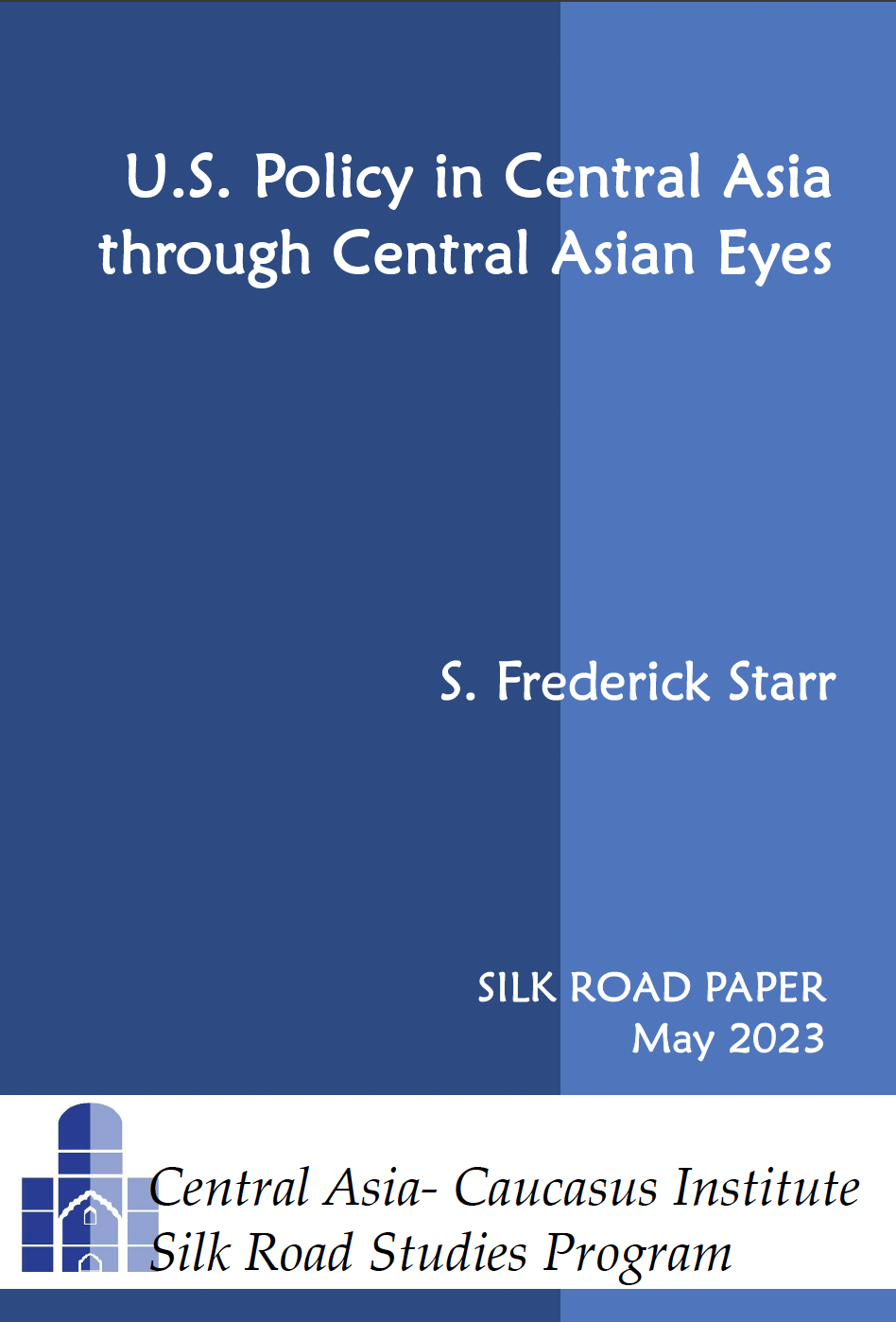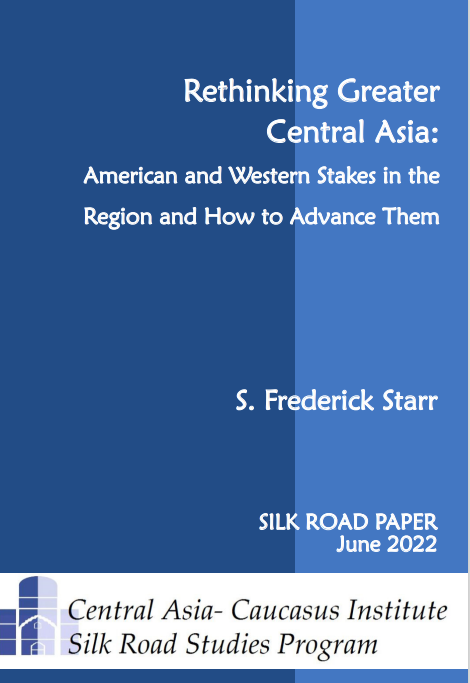By Gregory Gleason (11/3/2004 issue of the CACI Analyst)
BACKGROUND: More than a decade of experience of the Commonwealth of Independent States (CIS) demonstrates the substantial barriers facing integration among the Eurasian countries. The CIS was originally established in 1991 for two purposes—to contribute to the collective security of the post-Soviet countries and to maintain the “common economic space” of the Soviet period. The CIS’s economic purpose proved more challenging than its framers anticipated.
BACKGROUND: More than a decade of experience of the Commonwealth of Independent States (CIS) demonstrates the substantial barriers facing integration among the Eurasian countries. The CIS was originally established in 1991 for two purposes—to contribute to the collective security of the post-Soviet countries and to maintain the “common economic space” of the Soviet period. The CIS’s economic purpose proved more challenging than its framers anticipated. More than a decade of broadly unsuccessful efforts to coordinate reciprocal arrangements have convinced the governments of the region that mutual interests do not necessarily imply cooperation.
Confronting these barriers to cooperation and identifying financing and investment as the weak link in previous efforts at integration, the Putin leadership has sought to refashion arrangements among the Eurasian states with a new strategy of regional economic integration. For several years, Russia’s constrained financial resources restricted the state’s ability to exert influence over its southern neighbors. Soaring oil prices have changed that situation.
The Kremlin is now putting a high priority on coordinating the fuel and power sectors with the banking sector. The goal is to expand Russia’s influence through expanding Russia’s control over infrastructure in the Caucasus and Central Asia. Russia has a comparative advantage in energy and power, with highly skilled technical specialists and advanced technologies in drilling and transporting. But Russia has been hampered by the weakness of the banking sector. Now the Russian government is experimenting with new financial instruments to complement its strengths in the energy and power sector. The Russian government is offering to take direct equity in power and transportation enterprises, to offer guaranteed loans and credits and to exchange sovereign debt for equity in enterprises.
IMPLICATIONS: Russia is seeking to reintegrate the Soviet-era electric grid to establish UES as the dominant player in the region’s power market. In order to capture market position, UES has negotiated power supply agreements with Armenia, Azerbaijan, Georgia and Kazakhstan on terms attractive to the countries. UES took responsibility for running Armenia’s Medzamor power plant in 2003. In September 2004, UES concluded a deal to take a 50 percent equity share in Kazakhstan’s large Ekibastuz power plant. In October 2004, UES took responsibility for maintaining Georgia’s main power plants.
To facilitate energy trade with Turkmenistan, Russia is has established bank credits and secured transaction arrangements. In April 2003, Turkmen President Niyazov and Russian President Putin concluded a 25-year agreement on natural gas trade. In March 2004 the Russian National Reserve Bank was granted responsibility for regulating debt claims for Turkmenistan’s gas marketing firms Itera and Zarit. In July 2004, Gazprom created a new firm, Rosukrenergo, that was granted exclusive rights to market Turkmen gas for the Ukrainian market.
Flowing from a larger, integrated power strategy that links Russia’s natural gas reserves with Central Asia’s hydroelectric potential, Russia is seeking to expand its role in the Kyrgyz and Tajik hydroelectric industry. Hydroelectric power is cheap, but subject to seasonal fluctuation. In Central Asia irrigation and heat users compete for control over generation schedules, as upstream communities prefer to generate heat in winter and downstream communities prefer for water to be available for summer irrigation. Linking gas and hydroelectric therefore makes economic and environmental sense; gas-fired plants can supplement hydroelectric during peak periods, are environmentally friendly, and can be situated close to urban populations.
Despite considerable attention from the international financial institutions, Kyrgyzstan and Tajikistan’s hydroelectric sector have not attracted outside investment, because they continue to run at a loss. Tajikistan’s municipal electricity tariffs recover less than half of production costs. UES chief Anatoly Chubais headed a delegation to Kyrgyzstan last August to negotiate investment in Kyrgyz hydroelectric stations. The Russians agreed to invest $350 million in the Kambar-Ata # 2 station and to develop a larger investment package for the larger Kambar-Ata # 1 station by 2007.
Russia has proposed to assist Tajikistan by trading sovereign debt for equity in hydroelectric facilities. A debt-for-equity swap is essentially a barter transaction. As in all barter transactions, the true terms of exchange are disguised because there is no independent assessment of the worth of assets traded. The parties may agree, but that does not mean that the trade necessarily reflects fair market value.
Tajik domestic electric demand is now met from the large Rogun dam high on the Vakhsh cascade. The construction of dams lower along the Vakhsh was interrupted by the Soviet collapse and the Tajik civil war. The civil war also left Tajikistan heavily indebted to Russia. Last August UES played a key role in forming a consortium to finance the completion of the Vakhsh power stations. When Russian President Putin, accompanied by Anatoly Chubais, met with Tajik President Rahmonov on October 17, 2004, the presidents announced an investment package of $560 million, including $299 in debt-for-equity.
CONCLUSIONS: Russia’s expansion into Central Asia is driven by political rather than economic considerations. The Kremlin is concerned with countering American and European influence in the region while also presenting obstacles to Chinese encroachment. Harnessing Russia’s comparative advantage in energy and power would indeed seem to be a way to make good business out of strategic purpose. Without question, the fusion of the Russian government, the large Russian oil and gas companies, the Russian electric power utilities, and the newly emergent Russian banking sector has created a forceful new dynamic in the Central Asian region.
But using political criteria for business calculations invariably involves risk. There are reasons that the Central Asia and Caucasus power enterprises have not attracted commercial investment. Taking over assets that have been passed over by commercial investors implies taking on the responsibility for low-producing or even loss-generating enterprises. The political benefits may exceed the economic costs and, once the enterprises have been restructured, they may return to profitability. In this case, the overall strategy may work. If so, Russian enterprises could be strategically well placed for future expansion. As demand for power increases in the decades ahead in west China, Afghanistan, India, and the Middle East, Russian enterprises will be in a position to respond. However, if unexpected shifts in demand or unanticipated technological developments should change the situation, the Russian government could find itself shouldering unexpected burdens as the Central Asian enterprises continue to produce losses, demand subsidies, and provide only minimal strategic advantage.
AUTHOR’S BIO: Gregory Gleason is Professor of Political Science and Public Administration at the University of New Mexico.






 Book S. Frederick Starr and Svante E. Cornell,
Book S. Frederick Starr and Svante E. Cornell,